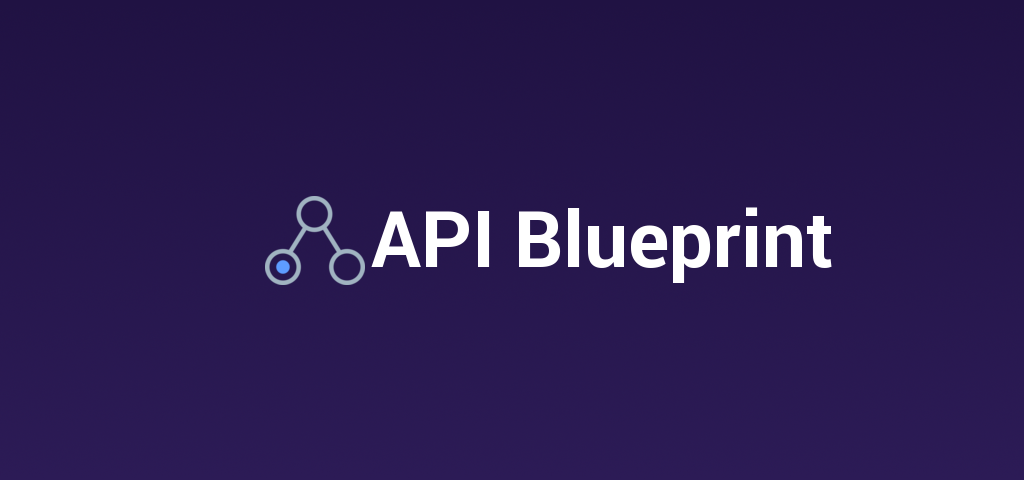
API BlueprintでWebAPI仕様書を書く
WebAPIを開発する場合、APIの利用者向けにAPI仕様書を書くと思います。 API BlueprintというWebAPI仕様書のためのMarkdown記法を拡張した記法があり、これに則って仕様書を書くとスムーズに書くことができます。 今回は、このAPI Blueprintに則ってWebAPI仕様書を書く際のちょっとしたTipsを書いてみます。
前提
ここでは、
- API Blueprint形式のドキュメントをテキストエディタで書く。
- ドキュメントは、aglioを使ってHTML化する。
を前提としています。
API Blueprint
API Blueprintは、公式サイトに、
A powerful high-level API description language for web APIs.
とあるように、API仕様書を書くための記法です。
API Blueprintの記法の詳細については、ここでは扱いませんが、例を載せておきます。
FORMAT: 1A
HOST: https://www.example.com
# API
API仕様書のサンプルです。
# Group Articles
## Articles [/v1/articles]
### GET
記事リストを取得する。
+ Request
+ Headers
Content-Type: application/json
+ Response 200 (application/json)
+ Attributes (ArticleList)
### POST
記事を登録する。
+ Request
+ Headers
Content-Type: application/json
+ Attributes (ArticleCreateParams)
+ Response 201 (application/json)
+ Attributes (Article)
# Group Comments
## Comments [/v1/articles/{article_id}/comments]
### GET
記事に対するコメントリストを取得する。
+ Parameters
+ article_id: 1 (number) - 記事ID
+ Request
+ Headers
Content-Type: application/json
+ Response 200 (application/json)
+ Attributes (CommentList)
aglio
API Blueprint形式のドキュメントを作った後、「aglio」というツールを使ってHTML化することができます。
上述のAPI Blueprint形式のドキュメントをaglioでHTML化すると、↓のようなHTMLが得られます。

Tips
ここからは、API Blueprint形式で仕様書を書くにあたり、こう書くと書きやすい、といったTips的なことをいくつか纏めてみます。(もちろん、すべての人にとって必ずしも書きやすい方法ではないと思います。)
Overviewを書く
複数のAPIを定義する場合に、各APIで共通の仕様(HTTPヘッダ)を説明するのには、Overviewに書くと良さそうです。Overviewは、「API name and overview section」という、ドキュメントの先頭のセクションに書くことができます。
ファイルを分割する
定義するAPIの数が多い場合、単一のファイルのすべてを書くと、全体の見通しが悪くなり、得策とは言えません。 aglioを使ってHTML化する場合、
<!-- include(partial.md) -->
<!-- include(partial.apib) -->
のように、外部ファイルをインクルードして、結合することができます。 例えば、ブログのようなシステムでのAPIを定義する場合に、認証API、ユーザAPI、記事API、コメントAPIなどが定義できそうですが、このような場合は、それぞれの仕様を別々のMarkdownファイルに書き、本体のファイルで、
<!-- includes(auth.md) -->
<!-- include(users.md) -->
<!-- include(articles.md) -->
<!-- include(comments.md) -->
とすると、管理がしやすくなります。
Attributesセクションを使う
RequestセクションやResponseセクション配下のBodyセクションにJSONのデータ構造を一つ一つ書くのはとても面倒です。 Data Structuresにデータ構造を定義しておくと、Attributesセクションにデータ構造名を書くだけで、簡単にJSONのフォーマットを表現できるようになります。
例えば、
# Data Structures
## UserCredentials
+ email: `foo@bar.com` (string) - Email Adress
+ password: `secret` (string) -Password
のようにData Structuresを定義しておくと、
Request (application/json)
+ Attributes (UserCredentials)
と書くことができます。
Data Structuresは細かい粒度で定義する
1つのリソースに対して、
- データ取得時のレスポンスに乗せるJSON
- データ登録時のリクエストに乗せるJSON
- データ更新時のリクエストに乗せるJSON
で、それぞれ微妙に属性が異なる場合があると思います。 例えば、データ取得時は生成日時、更新日時を乗せるが、データ登録時は受け取る必要がない、などです。
この場合、次のようにData Structuresに別々のデータ構造として定義してしまえば、話が簡単になります。
# DataStructures
## Article
+ id: 1 (number) - ID
+ title: `Awesome Article` (string) - title
+ body: `This is a body.` (string) - body
+ status: 0 (enum[number]) - status
+ created_at: `yyyy-MM-ddThh:mm:ss.SSSZ` (string) - when created
+ updated_at: `yyyy-MM-ddThh:mm:ss.SSSZ` (string) - when updated
## ArticleCreateParams
+ title: `Awesome Article` (string) - title
+ body: `This is a body.` (string) - body
## ArticleUpdateParams
+ id: 1 (number) - ID
+ title: `Awesome Article` (string) - title
+ body: `This is a body.` (string) - body
+ status: 0 (enum[number]) - status
DataStructuresにはネストした構造が定義できることを知る
僕は当初気づかなかったのですが、Data Structuresに定義するデータ構造はネスト構造が定義できます。 例えば、ArticleとCommentが1対多の関係にあって、ArticleのJSONの中にCommentリストを含めたデータ構造を定義することができます。
## Article (object)
+ id: 1 (number) - ID
+ title: `xxxxxxxxxx` (string) - Title
+ body: `xxxxxxxxxx` (string) - Body
+ created_at: `2017-02-01T12:34:56.000Z` (string) - When created
+ updated_at: `2017-02-01T12:34:56.000Z` (string) - When updated
+ comments (array)
+ (Comment)
## Comment (object)
+ id: 1 (number) - ID
+ article_id: 1 (number) - Article ID
+ body: `xxxxxxxxxx` (string) - Body
+ created_at: `2017-02-01T12:34:56.000Z` (string) - When created
+ updated_at: `2017-02-01T12:34:56.000Z` (string) - When updated
と定義すると、
[
{
"id": 1,
"title": "xxxxxxxxxx",
"body": "xxxxxxxxxx",
"created_at": "2017-02-01T12:34:56.000Z",
"updated_at": "2017-02-01T12:34:56.000Z",
"comments": [
{
"id": 1,
"article_id": 1,
"body": "xxxxxxxxxx",
"created_at": "2017-02-01T12:34:56.000Z",
"updated_at": "2017-02-01T12:34:56.000Z"
}
]
}
]
というJSONとして表現されます。
以上、API BlueprintでWebAPI仕様書を書く際のTipsを纏めてみました。